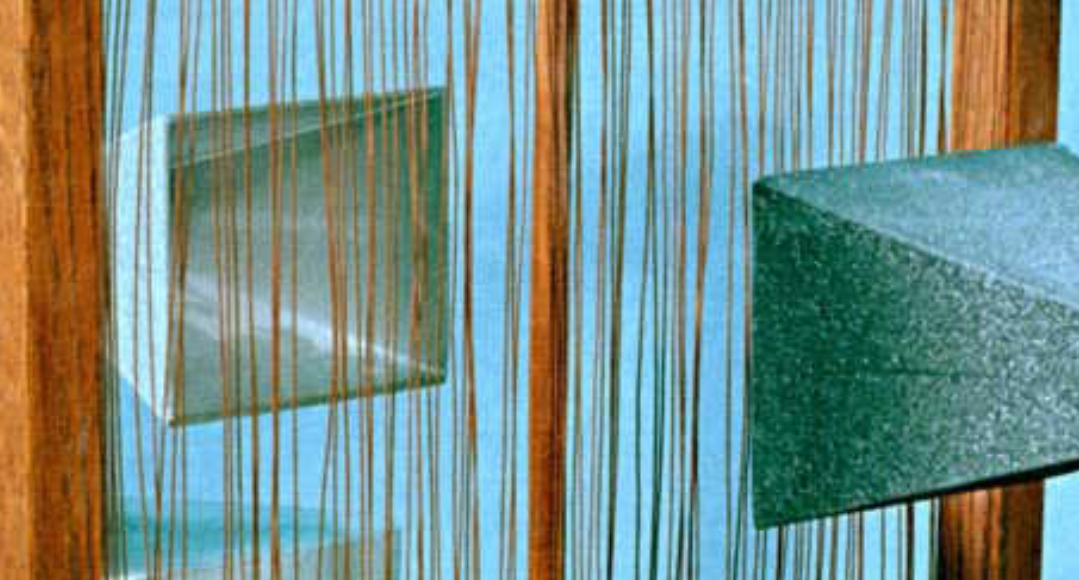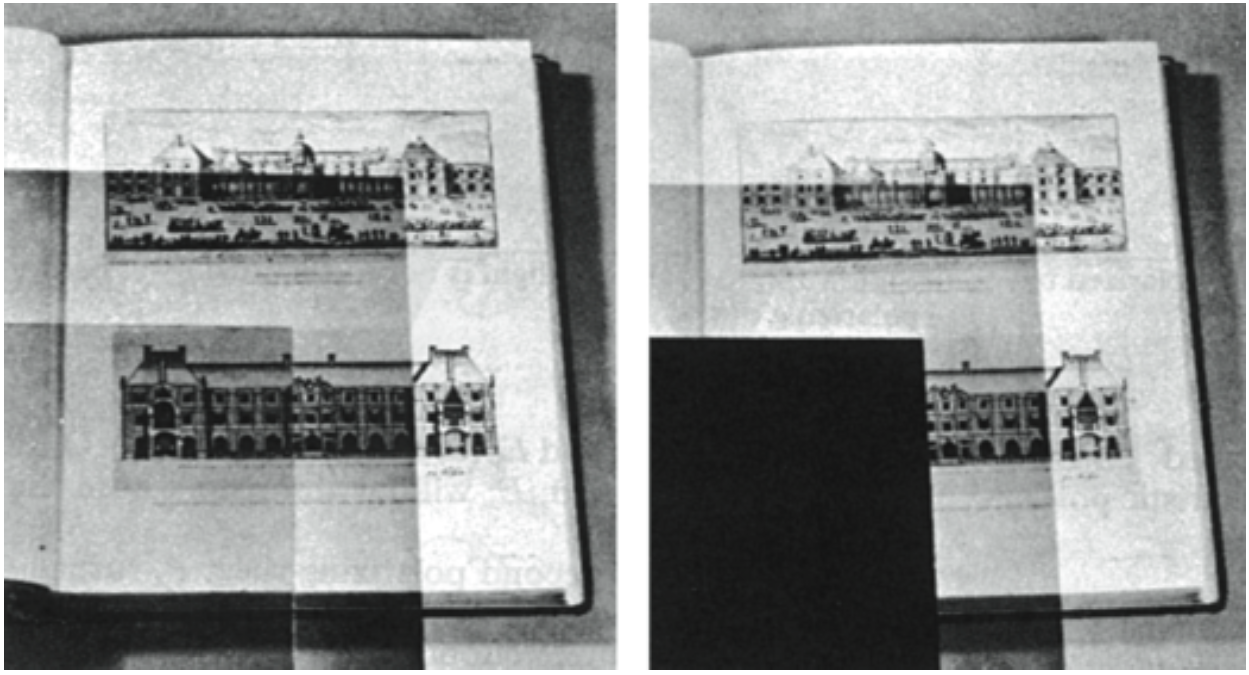Light Polarizers
We can picture light from the sun as a mixture of light waves with randomly oriented polarizations. (The  fields are, of course, always in the plane perpendicular to the direction of motion of the light wave. Only the angle in that plane is random.) A polarizer made of an array of copper wires like that shown in Figure (1), will not work for light because the wavelength of light is so short λ ≈ 5 × 10-5cm that the light passes right between the wires. For such a polarizer to be effective, the spacing between the wires would have to be of the order of a wavelength of light or less.
fields are, of course, always in the plane perpendicular to the direction of motion of the light wave. Only the angle in that plane is random.) A polarizer made of an array of copper wires like that shown in Figure (1), will not work for light because the wavelength of light is so short λ ≈ 5 × 10-5cm that the light passes right between the wires. For such a polarizer to be effective, the spacing between the wires would have to be of the order of a wavelength of light or less.

Figure 1: Microwave polarizer, made from an array of copper wires. The microwave transmitter is seen on the other side of the wires, the detector is on this side. When the wires are parallel to the transmitted electric field, no signal is detected. Rotate the wires 90 degrees, and the full signal is detected.
A polarizer for light can be constructed by imbedding long-chain molecules in a flexible plastic sheet, and then stretching the sheet so that the molecules are aligned parallel to each other. The molecules act like the wires in our copper wire array, but have a spacing of the order of the wavelength of light. As a result the molecules block light waves whose electric field is parallel to them, while allowing waves with a perpendicular electric field to pass. (The commercial name for such a sheet of plastic is Polaroid.)
Since light from the sun or from standard electric light bulbs consists of many randomly polarized waves, a single sheet of Polaroid removes half of the waves no matter how we orient the Polaroid (as long as the sheet of Polaroid is perpendicular to the direction of motion of the light beam). But once the light has gone through one sheet of Polaroid, all the surviving light waves have the same polarization. If we place a second sheet of Polaroid over the first, all the light will be absorbed if the long molecules in the second sheet are perpendicular to the long molecules in the first sheet. If the long molecules in the second sheet are parallel to those in the first, most of the waves that make it through the first, make it through the second also. This effect is seen clearly in Figure (2).

Figure 2: Light polarizers. Two sheets of polaroid are placed on top of a drawing. On the left, the axes of the sheets are parallel, so that nearly half the light passes through. On the right, the axes are perpendicular, so that no light passes through. (Photo from Halliday & Resnick)
 الاكثر قراءة في الكهرومغناطيسية
الاكثر قراءة في الكهرومغناطيسية
 اخر الاخبار
اخر الاخبار
اخبار العتبة العباسية المقدسة


